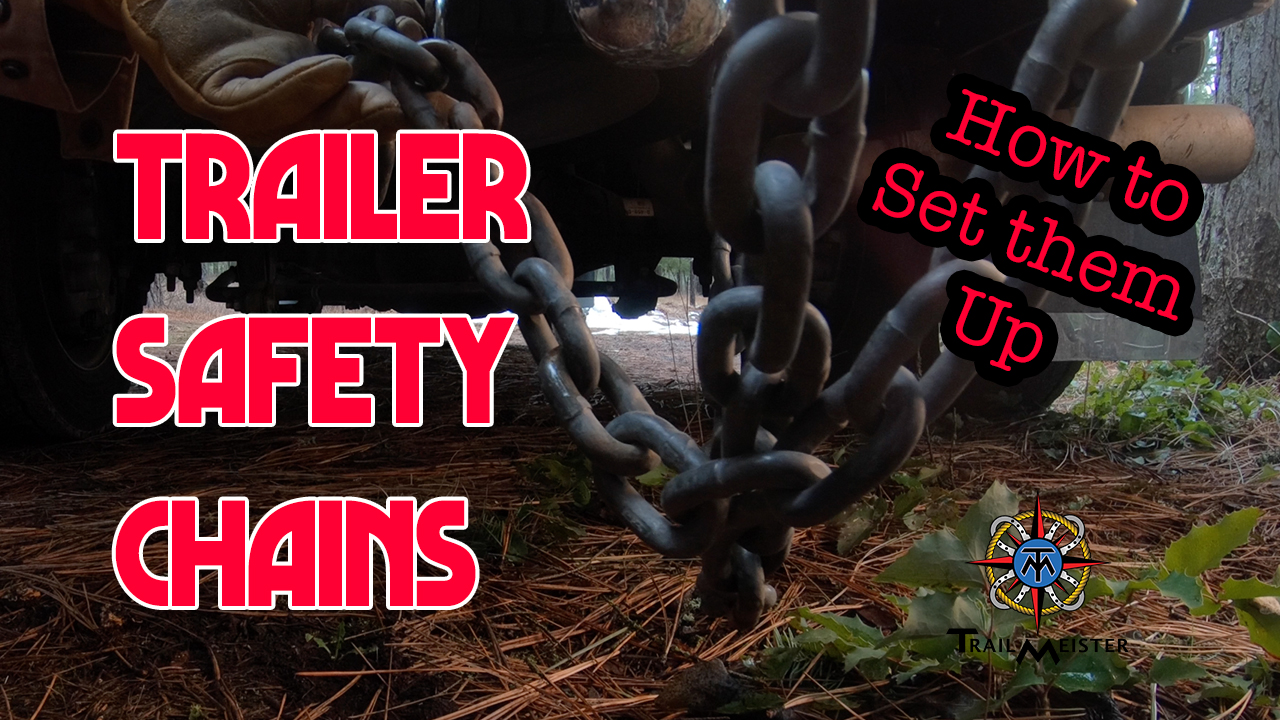Trailer safety is important, and our horses are counting on us to do it right. One trailer item that I’ve seen often overlooked are the Trailer Safety Chains on your trailer.
Are trailer safety chains just a pain in the rear? Maybe the better question to ask, since we’re required to use them: is “How do we make them effective?”
Let’s check out some best practices for these simple and very important pieces of chain!
Many thanks to B&W Trailer Hitches for their help in creating this video!
On the surface it seems reasonable that you wouldn’t want your trailer to stray from the tow vehicle, so the redundant connection of these chains is a good thing.
That being said, there are 2 parts to this . . . First, the laws that require trailer safety chains. And Second, the Practical and Responsible side of doing it right.
Let’s look at these 2, and some best practices.
The Laws of Trailer Safety Chains
After a bit of research, it seems that every state that I looked at does require safety chains with trailers
Most of the laws are consistent across the board, but some have slightly different details. For instance, some states require “chain”, where cable appears to be a legal substitute in others. Some states even specify certain types of hooks. Some dictate how chains must cross; others do not.
Check into your states rules to know what’s required.
On the practical side of Trailer Safety chains
Towing adds a lot of responsibility to driving. Making sure everything is safely connected is the first part of that.
I used to think that safety chains were only in case my hitch were to fail. That is wrong. This hitch isn’t going to fail.
A better way to thank about the safety chains is as a way to save things in case I fail. If I fail to connect the hitch, or if I fail to seat the ball, or if I fail to connect or tighten something, then these chains are there to compensate for my screw-up.
Here are some of the best practices that I think of when I’m looking at trailer chains on my trailers.
Be sure your trailer safety chains meet the right classification, “Class”, according to Gross Vehicle Weight Rating, GVWR. For the trailer, GVWR is the total capacity, including the weight of the trailer itself. You should be able to find the GVWR on the VIN label
If your chains have hooks, make sure they are of at least the same rating as the required chain. AND make sure there is no way for them to bounce out, shake off, or otherwise come loose.
The Trailer Safety Chains should be as short as practical. To measure, attach the trailer in an “almost Jack-knifed” condition, and set the chain length to the furthest connection points. The chain should not be tight, but should not have much slack either.
Too many times we just use and accept the chains that come with the trailer without thinking about the implications. Shorter (within reason) chains are safer.
DON’T allow chain to drag the ground. 5-8 inches above the ground should suffice.
DON’T twist trailer safety chains. If they are too long get them shortened. Severely twisting the chains dramatically reduces the strength of the chains.
As you connect things, make sure the cable (or chain) to the emergency brake box, is shorter than the trailer safety chains. You definitely want that to activate in an emergency. If that cable is longer than the chains, it will never activate.
Cross the chains when hooking up — but don’t twist them. Crossing helps with turning especially if the connection points have wide separation.
Crossing the chains helps you maintain control of the trailer. Because the crossover reduces the range of freedom of the trailer tongue.
Trailer Safety Chains are for the emergency we hope never happens. Treat them as if your life, and your horse’s life depends on them.
And that was a TrailMeister Trailer Tip. For more practical information on trail riding and camping with horses visit us at www.TrailMeister.com. TrailMeister is the world’s largest guide to horse trails and camps.
And please don’t forgot to those like, share, and subscribe buttons as well as using our Amazon links to help us keep producing content to help you on the trail and in camp.
Until next time happy trails!


